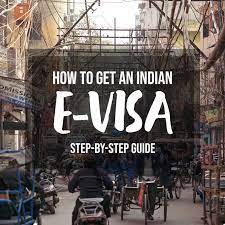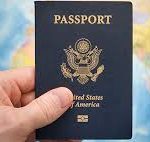Are you planning a trip to India and wondering how to navigate the visa application process? Look no further! This comprehensive guide will take you through every step of applying for an Indian tourist visa, from gathering necessary documents to submitting your application. Whether it’s your first time traveling abroad or you’re a seasoned traveler, this guide will provide valuable insights and tips for obtaining your Indian tourist visa with ease. Get ready to embark on your adventure in one of the world’s most fascinating countries – let’s dive into the application process together!
What is a Tourist Visa?
A tourist visa is a travel document issued by a foreign country to a visitor who is not a citizen of that country. The purpose of a tourist visa is to allow the visitor to stay in that country for a predetermined period of time, usually 30 days but sometimes longer, in order to explore the local culture and enjoy the sights and sounds of the area. Indian Visa Application for Tourist Visa
Tourist visas are also sometimes issued to people whom the country hosting them considers as tourists – people who have not made any definite plans or arrangements to reside in that country for an extended period of time. This can be someone who has only been in the country for a day or two, for example, and who would like to extend their visit.
The process of obtaining a tourist visa varies from one country to another, but generally speaking it involves submitting an application form (which may require authentication by means of either passport or national ID card), paying an application fee (if required), and providing supporting documents such as proof of travel arrangements, evidence of funds available for purchase while in the country, and proof that you do not pose any threat to public security or welfare. In some cases you may also need to provide medical documentation proving that you are free from certain health conditions which might render you ineligible for travel.
Once all required paperwork has been submitted and processed, your visa should arrive in your mail box shortly after. If it does not, please contact your local embassy or consulate for more information on how to
How to Apply for a Tourist Visa?
If you are a foreigner who desires to visit India for tourism purposes, then you will need to apply for a tourist visa. The process of applying for a tourist visa can be difficult, but with the help of this guide, it should not be too difficult for you to complete. Indian Business Visa
First and foremost, you will need to gather all of the necessary documentation. This includes your passport photo, your original travel itinerary, proof of financial stability (bank statements, letters from employers), and your passport copy. You will also want to bring your hotel reservation confirmation letter if you are staying in India for more than 30 days.
After gathering all of the necessary documents, you will need to contact the Indian embassy or consulate nearest to where you live. Once you have contacted the embassy or consulate, they will likely request that you undergo a health check. After the health check is complete, they will issue you an appointment for an interview with a visa officer.
The interview process for a tourist visa can be tough, but with the help of this guide, it should not be too difficult for you to complete it successfully. During the interview, the visa officer will likely ask about your reasons for wanting to visit India and whether or not you have any concerns about traveling to India. They may also ask about any previous trips that you have made to India and inquire about your political views regarding India. It is important that you answer all questions honestly and accurately so that no problems arise during your stay
What is a Business Visa?
If you are visiting India for tourism, a business visa might be the best option for you. Business visas allow foreigners to conduct business in India and are typically valid for six months. The requirements for obtaining a business visa vary by country, but generally include providing evidence that your business will benefit India and meeting certain other requirements.
To apply for a business visa, you will likely need to submit an application form and documentation supporting your claim that your visit will generate revenue for India. You may also need to provide proof of financial stability and insurance coverage in case of accidents or illness while in India. Finally, you will likely be required to provide police reports or other criminal records in your home country if they are not already available on file with the Indian authorities.
Once you have submitted all of the required documents, you will need to appear before an immigration officer at a designated location to complete the visa application process. If all goes well, you should receive your business visa within a few days. Be sure to check the expiration date on your visa carefully; if it is about to expire, contact the Indian embassy or consulate immediately so that you can renew it before travel begins.
Requirements for a Tourist Visa?
-A valid passport with at least six months remaining validity
-Proof of return or onward travel ticket
-A visa application form, which can be obtained from the Indian embassy or consulate in your home country
-Two recent passport size photos
-The fee for a tourist visa is US$60.00 (or Rs 4200)
Conclusion
After reading this comprehensive guide to the Indian tourist visa application process, you will be armed with everything you need to know in order to apply for a visa. We have provided all of the essential information about the visa application process, including what documents you will need and how to make an appointment at the embassy or consulate. Although it can be daunting, by following our guide you will have everything that you need to successfully apply for a tourist visa. Thank you for taking time out of your day to read our article!


